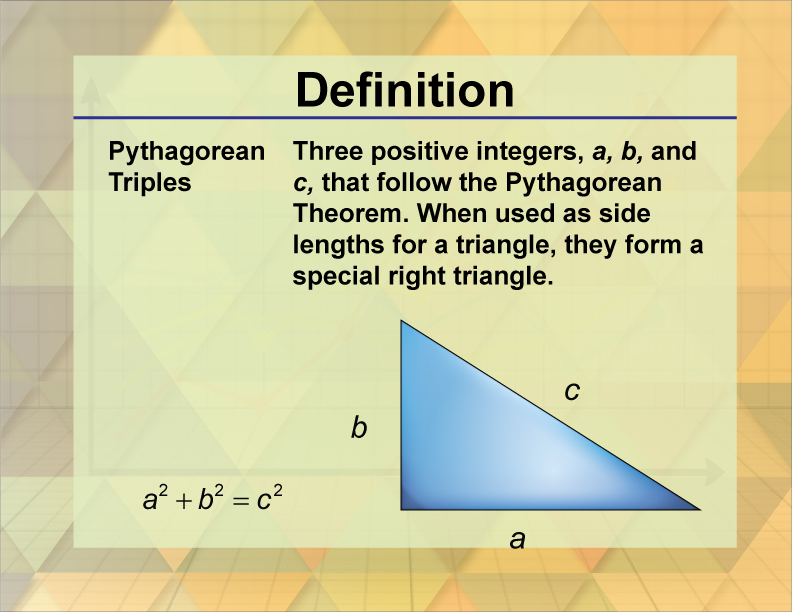
Display Title
Definition--Triangle Concepts--Pythagorean Triples
Display Title
Pythagorean Triples

Topic
Triangles
Definition
Pythagorean triples are sets of three positive integers that satisfy the Pythagorean theorem:
a2 + b2 = c2
Description
Pythagorean triples are sets of three positive integers that satisfy the Pythagorean theorem, which states that in a right triangle, the square of the hypotenuse is equal to the sum of the squares of the other two sides. Common examples include (3, 4, 5) and (5, 12, 13).
This concept is essential in various real-world applications, such as in construction and navigation. For example, Pythagorean triples are used to create right angles and ensure accuracy in building projects. They also play a role in various mathematical problems and proofs.
In math education, understanding Pythagorean triples helps students grasp the broader concepts of right triangles and the Pythagorean theorem. It also provides a foundation for more advanced topics, such as trigonometry and number theory. By mastering this concept, students can apply their knowledge to solve practical problems and develop a deeper understanding of geometric principles.
For a complete collection of terms related to functions and relations click on this link: Triangles Collection
| Common Core Standards | CCSS.MATH.CONTENT.4.G.A.1, CCSS.MATH.CONTENT.7.G.A.2, CCSS.MATH.CONTENT.4.G.A.2 |
|---|---|
| Grade Range | 4 - 8 |
| Curriculum Nodes |
Geometry • Triangles • Definition of a Triangle |
| Copyright Year | 2013 |
| Keywords | triangle, defnitions, glossary |